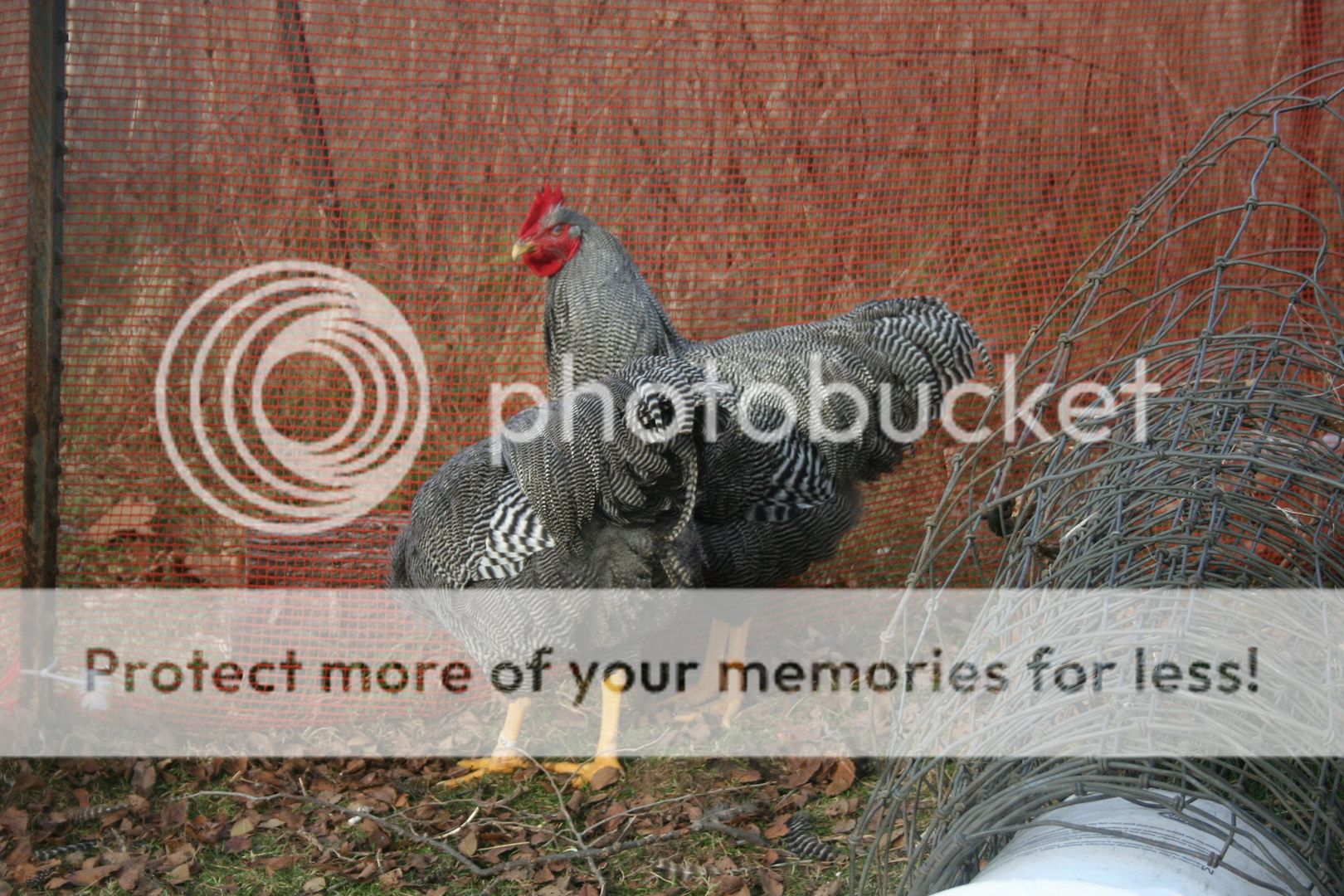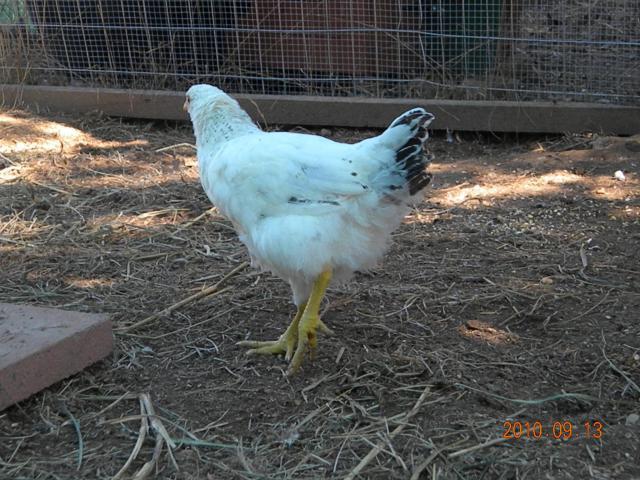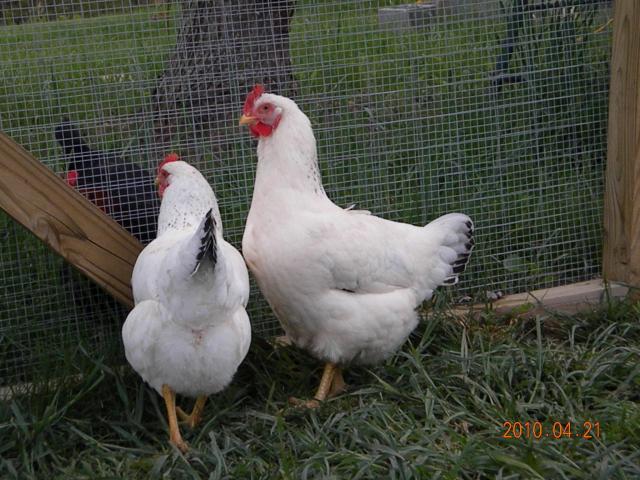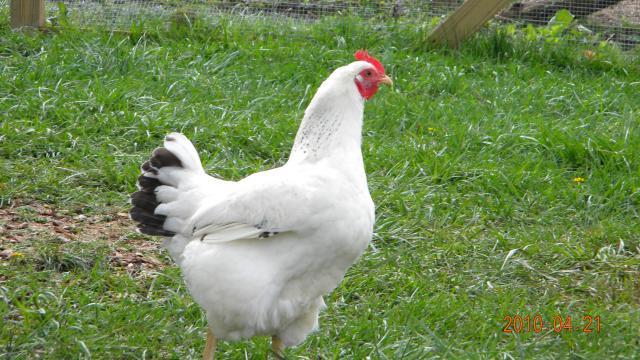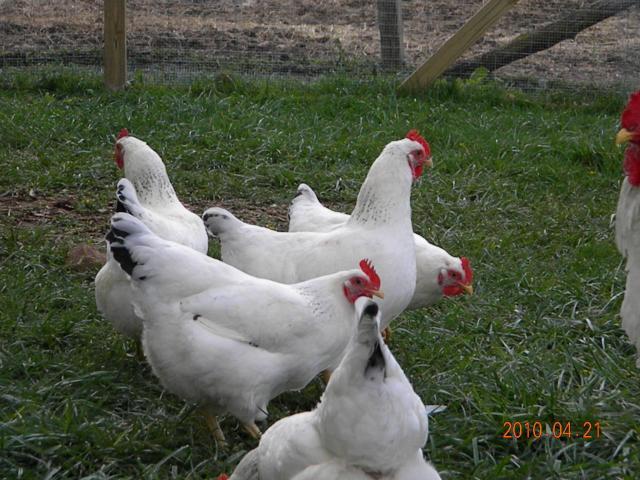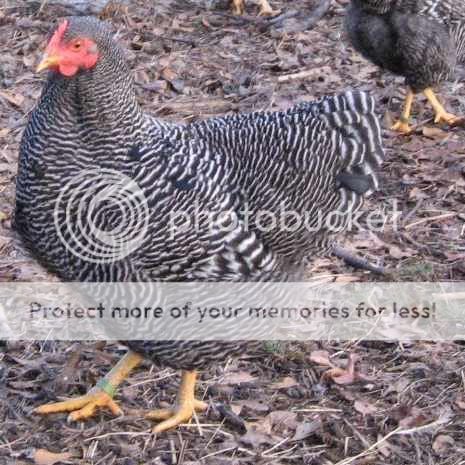If you go to the ALBC website and look in the download section,
http://www.albc-usa.org/EducationalResources/chickens.html
you will see the method I use. Here is a synopsis on how I do it. This is an excerpt from my article I wrote for the Plymouth Rock Club Newsletter:
To summarize I acquired stock from two breeders. During the time I acquired my Barred
Rocks, I was simultaneously involved in a breed recovery program with the
American Livestock Breeds Conservancy (ALBC) involving the Buckeyes. I felt
that at the most I could manage two breeds and still hatch enough to raise to be
able to maintain a breeding flock for both. The reason I mention this is that
the ALBC has an assessment program for the Buckeyes that is very instrumental in
the culling process of any breed. Anyone can go to their website and download
the forms for use. I use that program as a basis for criteria that I look for
in my stock.
During the growing out process, you should keep your eye out for weak, deformed
and unthrifty chicks. Cull those as soon as you can, you are wanting the best
right now. I try to hatch in blocks of 20 and grow them all out together,
separating the pullets at about 8 wks. At 16 weeks I do my complete assessment
of each bird I raise. First item I do is to weigh the bird and record its
weight on my assessment sheet. I usually assess pullets first since they are
generally smaller than the cockerals. I cannot hold a bird and tell how much it
weighs, so I use put the bird in a plastic bucket sitting on a digital scale.
I then look at the head and see how large it is. Generally the heavier birds
have larger skulls meaning larger bones and an indicator of high vitality. I
then measure the heart girth, width and length of back and record those
measurements on my assessment sheet. I then take notice of how much fleshing of
breast and thighs the bird has. After all, these birds should have some meat on
those bones, at 16 wks they should be good eating size and you don't want all
bones. I like to involve anyone wanting to learn this assessment process help
me record the figures on the assessment sheet.
I then look at other aspects of the bird like shank size/color, points on comb and
pelvic/keel measurements. Lastly, I look at the barring on the feathers. I
rate the barring on a scale of 1-5, 5 being the best. I look at the saddle,
hackle, breast, primary and tail feathers grading each one on my sheet. If no
major defects are noted and the bird passes my benchmarks, I then tag it in a
manner that I can look at the bird in the pen walking around so I can observe
their behavior for future remarks.
This process has allowed me to select my birds in a manner that is standardized
and fair. It also allows me to immediately know which ones are the runts and do
not have good rates of growth and are culls. Several breeders I speak with also
emphasize that concentrating on the type, or shape, is priority. You can work
on color and patterns later, but that does no good if you don't have the correct
shape.
I evaluate my assessment sheet and I pick out the top 10% of each sex to band
and separate for further observation. I use weight and fleshing as the primary
criteria, and then follow there scores down in order of there evaluation. I
have found that those birds are going to be the best breeders in most scenarios.
I set my breeding pens up based on the fault I am trying to fix. The Barred
Rocks I acquired were leaps and bounds better than
any other stock I had seen, but still needed some refinement. I wanted to put
the color and fleshing on the other stock's size and rate of growth. After my
assessment the first year, I kept 1 male and 3 females from each family, keeping
the best of the best. I called one family W and the other family G based upon
who I got the original stock from. I crossed the two lines putting the male
from one family over the females of the other family. I called those "pens" G
line and W line and those names followed the females. I am sure there is a
better way to label your breeding pens, but that worked for me and you should do
what is easiest for you to remember. Keeping good records also helps to remind
you. This mating resulted in progeny of 50/50 GW. I hatched 190 chicks, as
many as I could stand, that year stirring up the gene pool greatly. This is
good and bad. First it brings every fault and good point to the surface, giving
the breeder ample opportunity to make the right choice for keepers. I saw
progeny that year every shape and size you can imagine. I will say, it made the
culling process fairly easy. If you put a bird on the scale and it weighs 1.5
lbs less than it should, you can immediately put that one in the cull pen, there
was 20 more behind it to pick from. Even if it had perfect color, its rate of
growth does not allow it to be indicative of the breed. It also allowed me the
opportunity to hold a really good bird and a really bad bird side by side, which
gave me the hands on feel of both. This tuned my senses tremendously.
The next year, I had available hens, pullets, cockerals
and roosters. This is when I cross the sons over the mothers and fathers over
daughters of both lines resulting in four breeding pens. My goal for that year
is to hatch at least 10 chicks from each of my best hens. I will then did my
selection process on these new birds and then consider all breeding stock on
there own merits. For subsequent years onward, I will mate young to old and set
up families rotating males on each family of hens. My mentor Don Shrider said
it best, "Remember, culling and selection are much more important than exactly
how the birds are mated."
Before you start breeding, you need to determine your goals for breeding. My
goal was to have good rates of growth with well fleshed birds. My secondary
goal was to get the type correct and then the coloring right. I have found that
when you get the first right, the second and third will follow. That is why I
weigh and handle my birds. I like to study photos of the birds in magazines,
internet or from shows. I also like looking in older poultry magazines for ads
of EB Thompson and other famous breeders of days gone by. I make stencils of
the profiles from these photos and paint them on the walls in the pens so I can
have side by side visuals.
I cannot say enough about how important it is to find a mentor, join a club and
read as much as you can about this subject. I would like to thank all those who
have helped me go from raising mongrels to thoroughbred stock.



